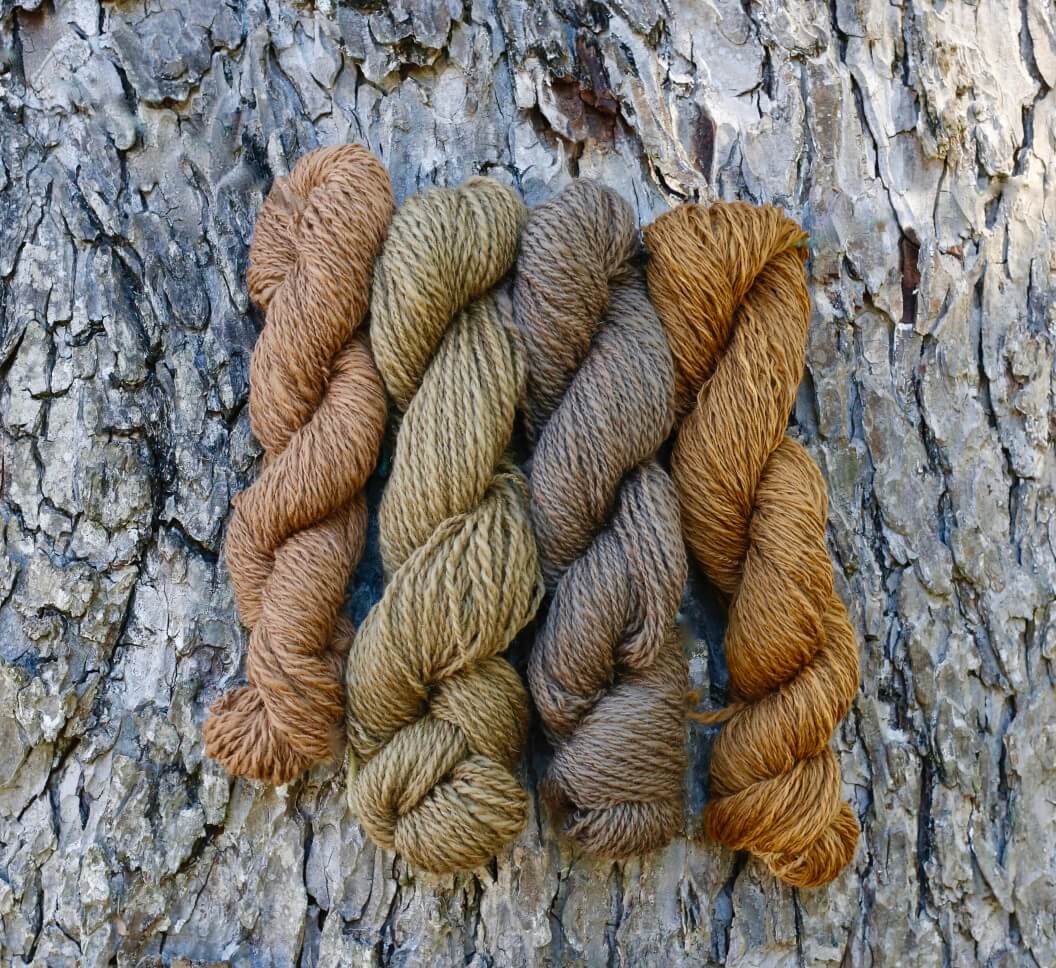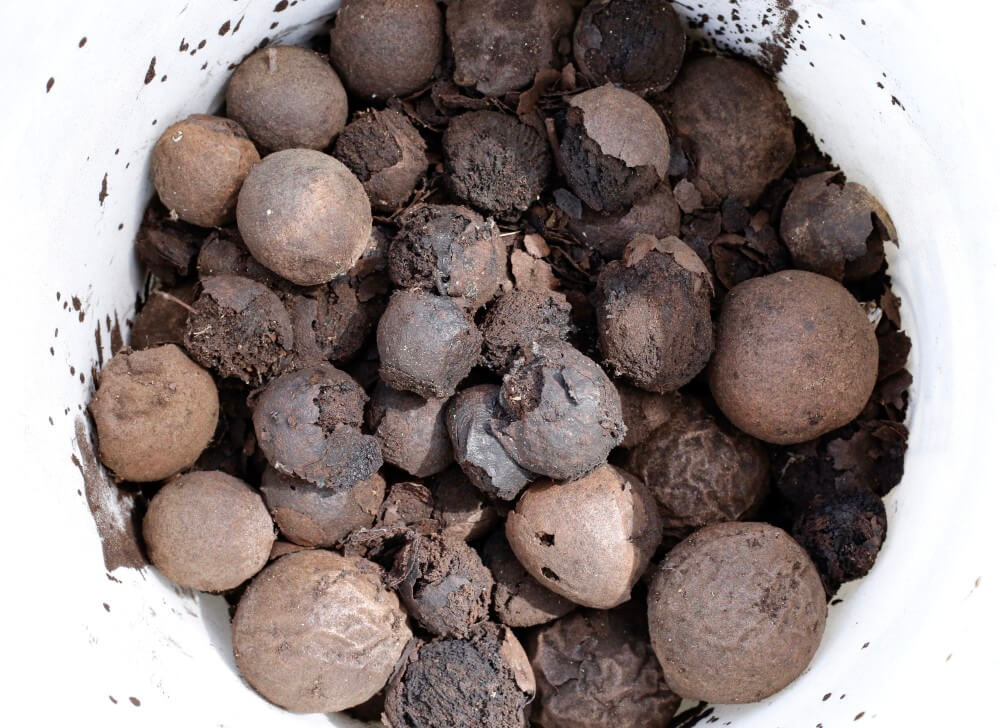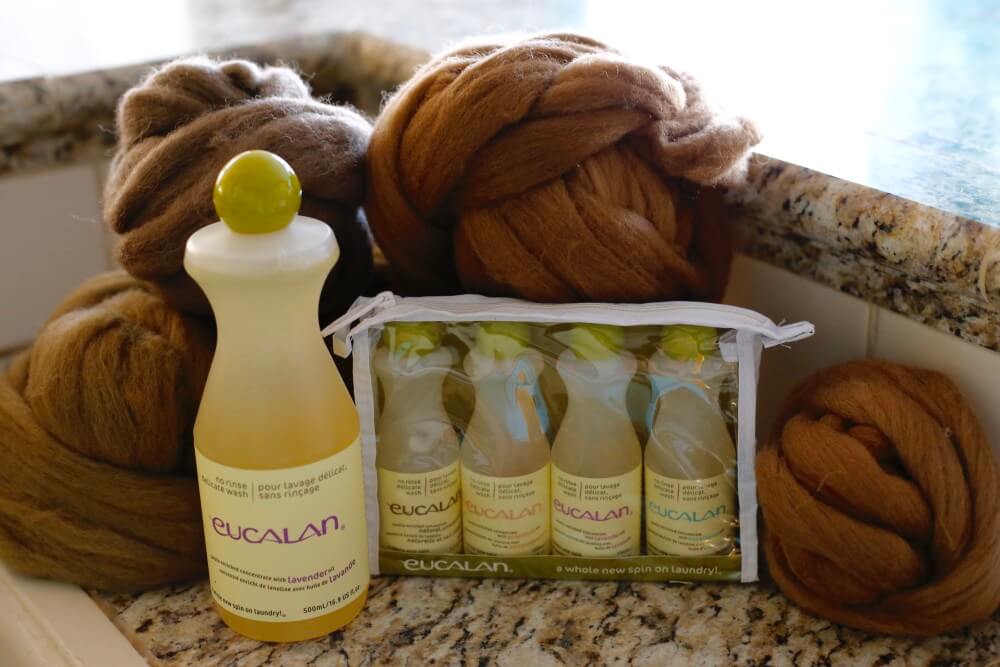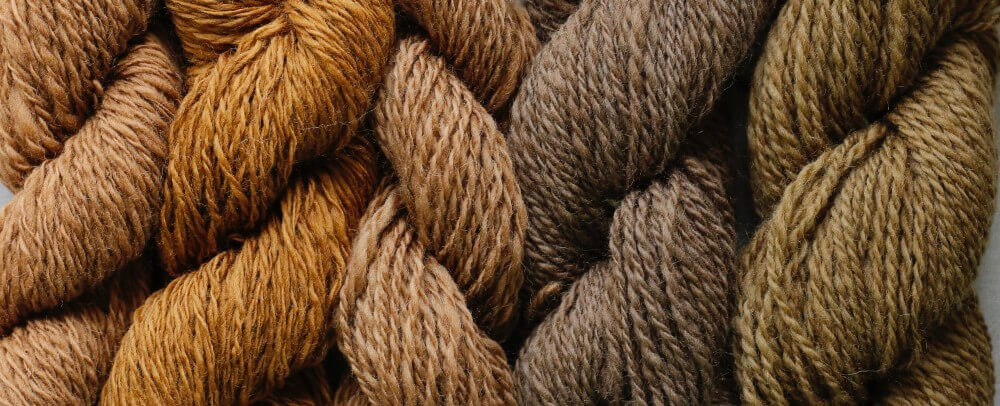In our last post, we dyed some of Kromski’s Polish Merino with Goldenrod.
This post will show you another type of natural dying, that uses Black Walnuts, another Autumn gift from Mother Nature.
The obvious difference between these two methods is that the Black Walnut requires no pre-mordanting of the wool. It does however, take several weeks to prepare the walnuts for use.
Choose an old bucket that can be discarded after use to gather your walnuts (5 gallons is a good size). Look for nuts that have the husk still attached. Old, somewhat rotten nuts are perfect for this task. When the bucket is about 3/4 full, add enough water to completely cover them. Place a loose fitting lid on top.
This next part is where your patience is needed. Leave the bucket outside in an out of the way spot. You won’t want it too near your front door as it will be allowed to ferment for the next 3 weeks or so. Check the pail from time to time and add more water if necessary. Warning: this will become a nasty, smelly, bug infested mess. Sound like fun??
The fermentation process releases tannic acid into the water, which acts as a mordant for the wool.
While the walnuts are soaking, gather a few more things that you will need. A large stainless steel stock pot, (20 quarts/18.9 liters is ideal) that will not be used for cooking, a colander and stirring ladle, also not from the kitchen, a piece of cheese cloth or similar fabric that can be used for straining, and disposable gloves. Another 5 gallon bucket is useful, but it can be done with the stock pot and one bucket. Use a portable burner so that this can all be done outside. Walnut WILL stain countertops and kitchen sinks! And of course you’ll need some wool.
For this project we have used Kromski Polish Merino in Light Pink, Yellow, Ecru, Light Blue, and Spearmint. I have a total of 12 oz.
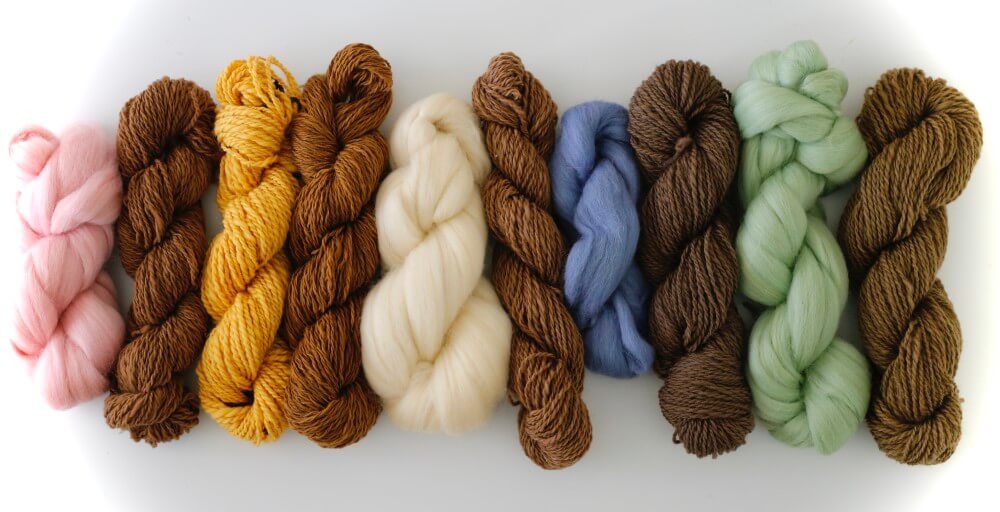 This dye goes a long way. There should be ample dye to color several pounds of wool, although the amount that can be done at one time will depend on the size of your pot. The wool needs to be able to move freely in the dye liquid.
This dye goes a long way. There should be ample dye to color several pounds of wool, although the amount that can be done at one time will depend on the size of your pot. The wool needs to be able to move freely in the dye liquid.
After the walnuts have had ample time to ferment, and the water is a nice deep brown, it’s time to strain off the walnuts. USE GLOVES to do this or you will have brown hands for days!
Pour the contents of bucket through the colander, over another bucket (or pot), catching the large chunks of walnut. Discard these pieces. Rinse the colander and place the cheese cloth over it. Strain the liquid one more time through the cheese cloth. This will remove any residual trash from the liquid. You should be left with several gallons of dye in your stock pot. It’s ok to add more water to bring the level up to about 2/3 full. The amount of water does not affect the amount of dye substance in the mix.
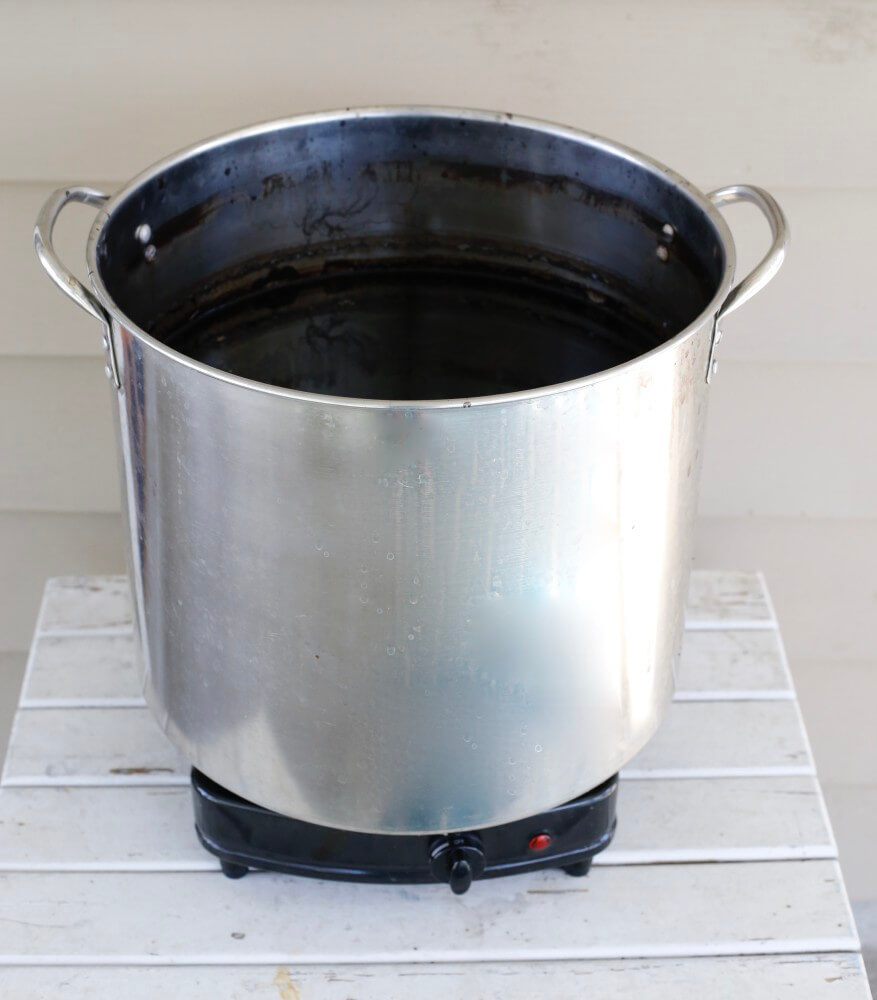 Submerge the wool into the dye. Remember to leave enough room in the pot so that the wool can move freely when gently stirred.
Submerge the wool into the dye. Remember to leave enough room in the pot so that the wool can move freely when gently stirred.
Slowly bring the dye up to a simmer, being carful not to agitate the wool (this will cause felting). Stir the pot on occasion to allow for an even take up of color. Simmer for 1-2 hours, depending on how dark you want the fiber to be. If unsure of the color, take a small pinch of fiber and rinse it to check the richness of the brown. When satisfied with the color, turn off the burner. Allow the pot to cool before removing the wool. There should still be a good amount of brown color to the liquid. This can be reused on more fiber if desired. Simply repeat the cooking process. However it should be noted that with each subsequent use, the dye will weaken slightly and the color may not be exactly the same as the color from the 1st pot. The change will be subtle, as stated earlier, this is a potent dye bath. But be prepared for this if you plan to do several pounds of fiber.
Rinse the cooled wool in room temperature water until the water runs clear. Again, be careful not to agitate it to avoid felting.
Now you may have noticed that this process is a smelly one. One final step before hanging the wool out to dry is to do a final wash using Eucalan Wool Wash. This is available from your favorite Kromski Dealer and comes in a variety of scents, including Grapefruit, Lavender, Natural Unscented, Eucalyptus and Jasmine. It is available in 3.3 oz, 16.9 oz and 1 gallon sizes. This will remove any residual odor and leave your fiber smelling lovely.
As you can see from my samples, the color variance is not really dramatic. The Light Pink is very similar to the Ecru (1st and 3rd in the photo below), but the subtle difference will add depth to my final project.




